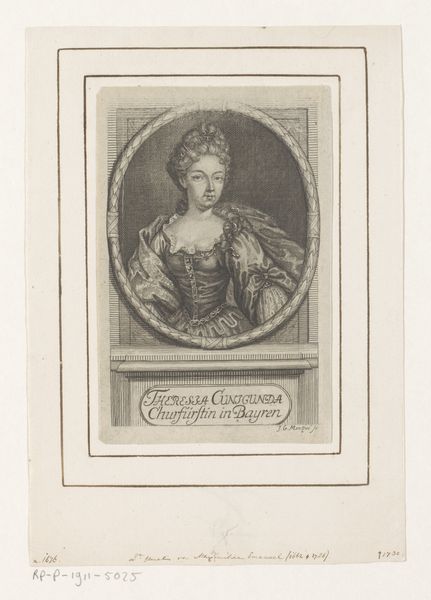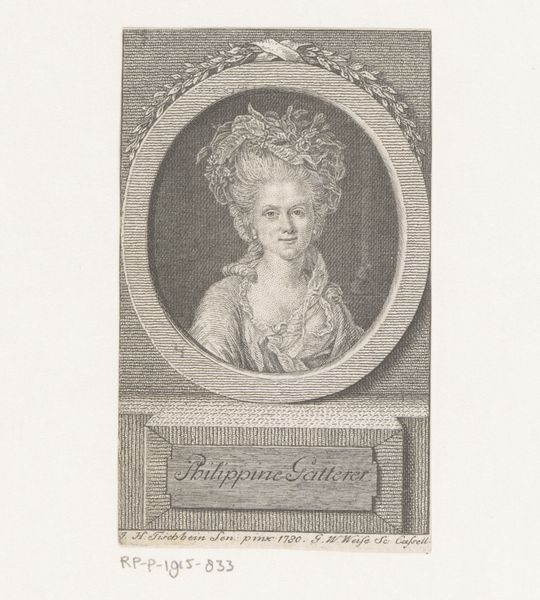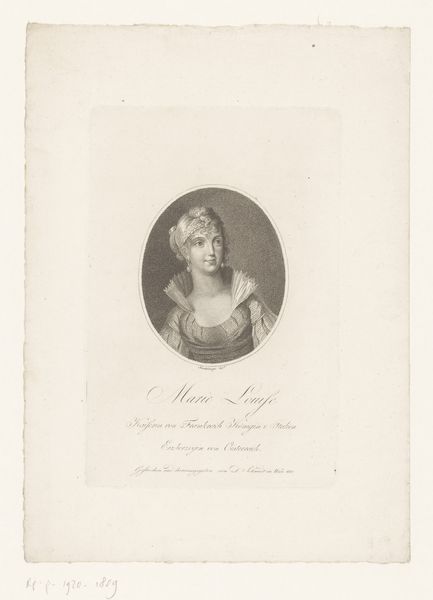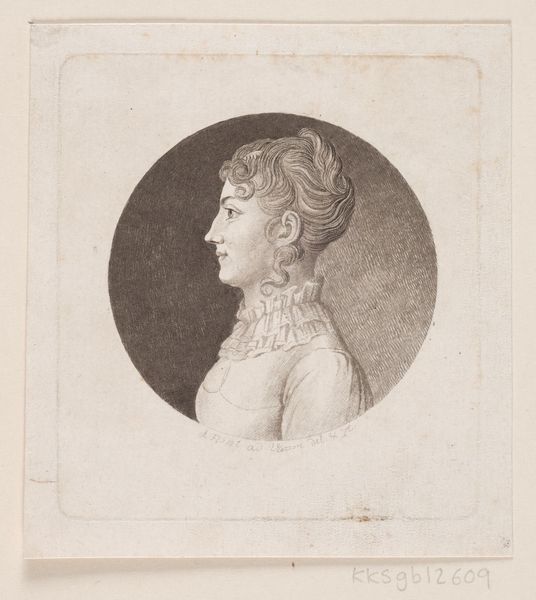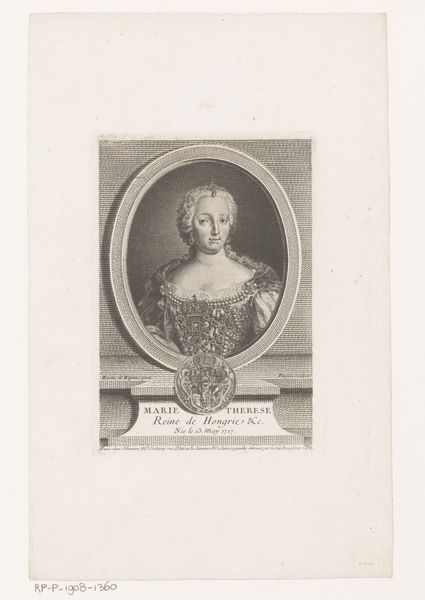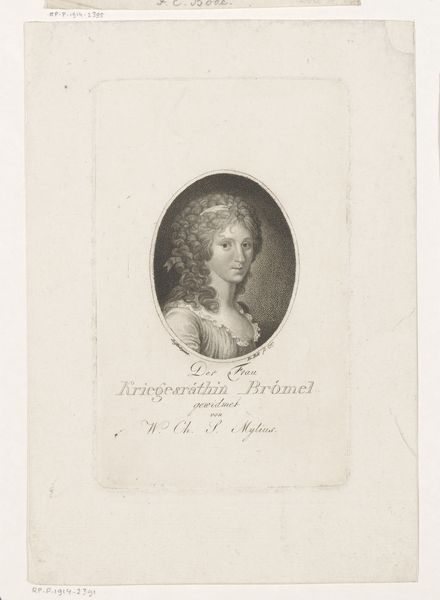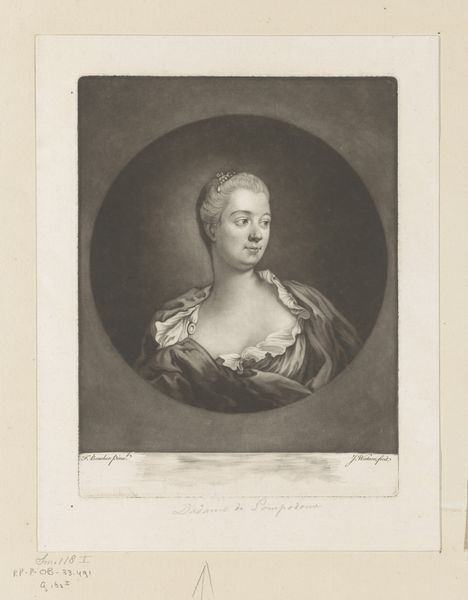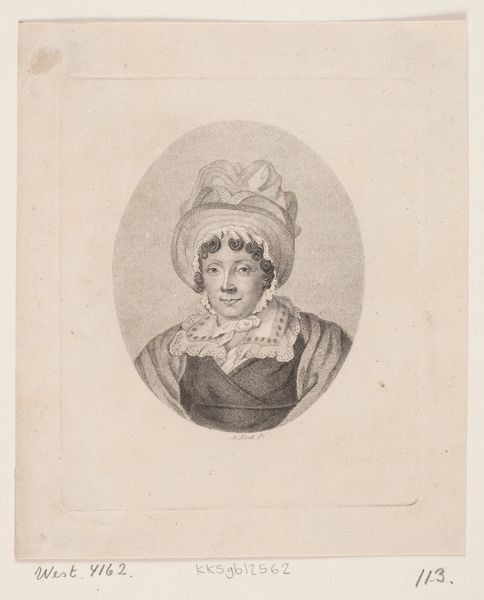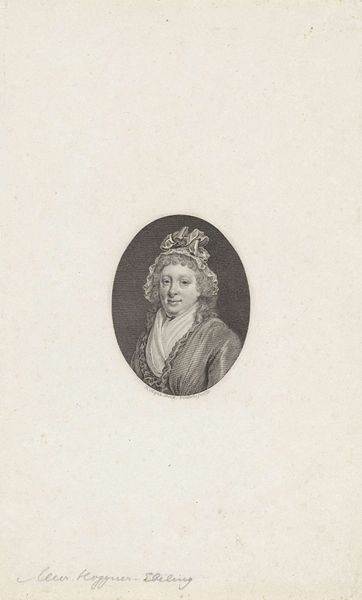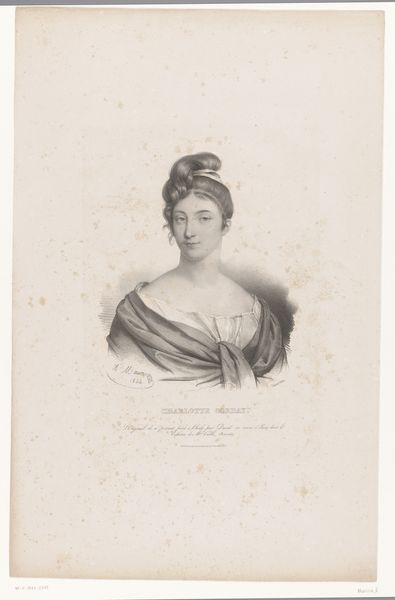
drawing, pencil
#
portrait
#
drawing
#
romanticism
#
pencil
#
realism
Dimensions: height 240 mm, width 151 mm
Copyright: Rijks Museum: Open Domain
Editor: This is Jean Marie Leroux's "Portrait of the Vicomtesse Dumoulin," created in 1836 using pencil in a drawing. The contrast seems subtle, focusing more on gentle tonal shifts rather than stark lines. How would you interpret the aesthetic choices in this portrait? Curator: We must appreciate the image’s reliance on line and form, which dictate its representational value. Note the circularity prevalent within the composition. The hair, the headpiece, the contouring of the face and torso, all present as contained spheres, contributing to a sense of unity, but also perhaps hinting at social constraint. Observe how the pencil work creates smooth, almost porcelain-like skin, contrasting against the relatively intricate, textured details of her clothing. Does the handling of line here convey a particular message about the sitter’s station or personality? Editor: I see what you mean. The controlled lines certainly give the impression of a carefully constructed image, emphasizing the subject's elegance, but it could also seem somewhat stiff and idealized. The shading behind her creates almost a halo, softening what might have been hard lines. Curator: Precisely. The tonal gradients around the figure introduce atmospheric depth that belies the drawing's two-dimensional nature. What we read here is how visual structures convey much about cultural values through artistic practice. The rendering emphasizes status and refinement within specific codes of visual decorum. Editor: I didn't think of it that way, focusing on how even seemingly soft lines convey meaning about historical subjects. Curator: Examining intrinsic visual elements provides a foundation for appreciating broader social narratives embedded within the art.
Comments
No comments
Be the first to comment and join the conversation on the ultimate creative platform.


